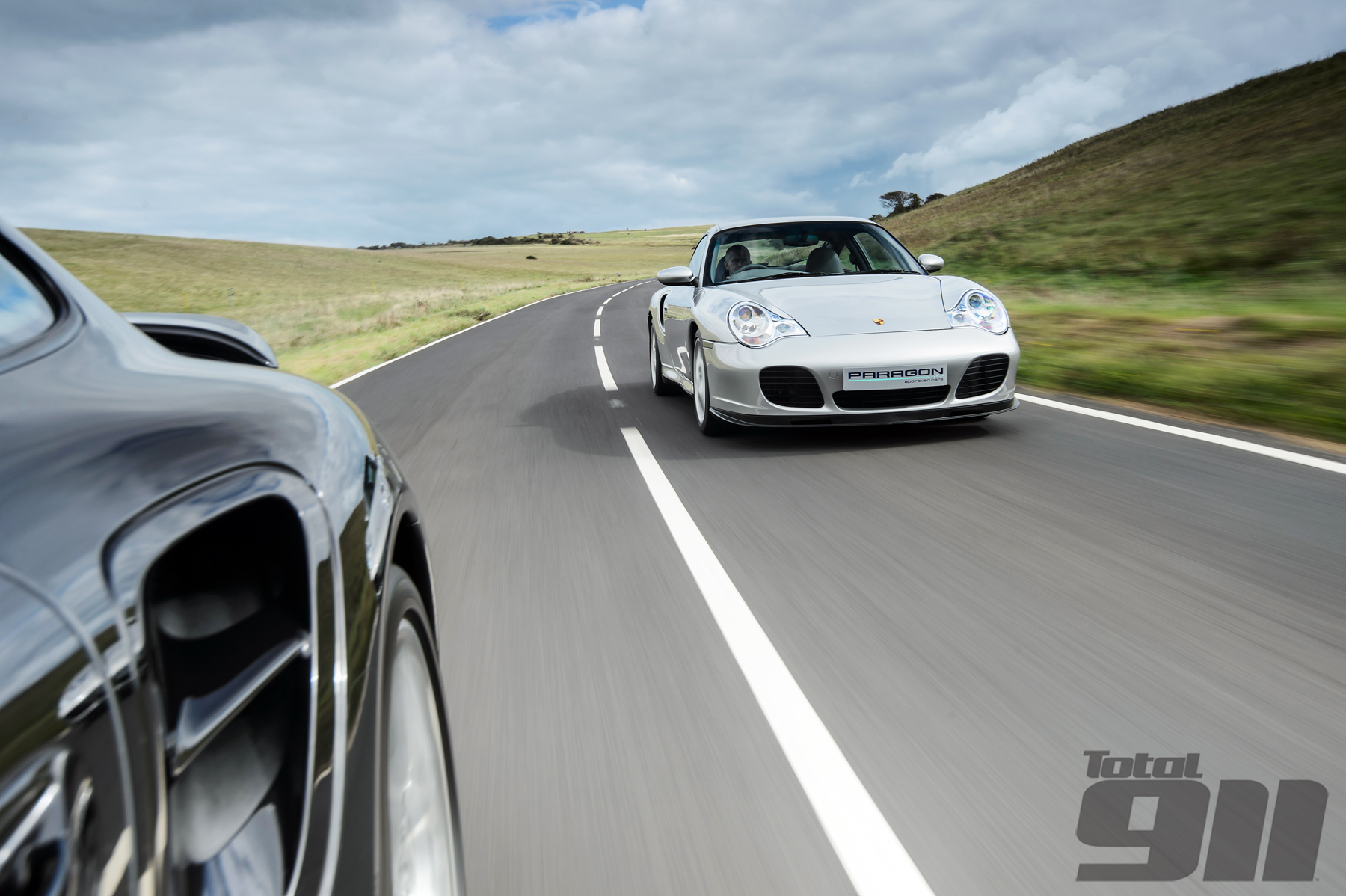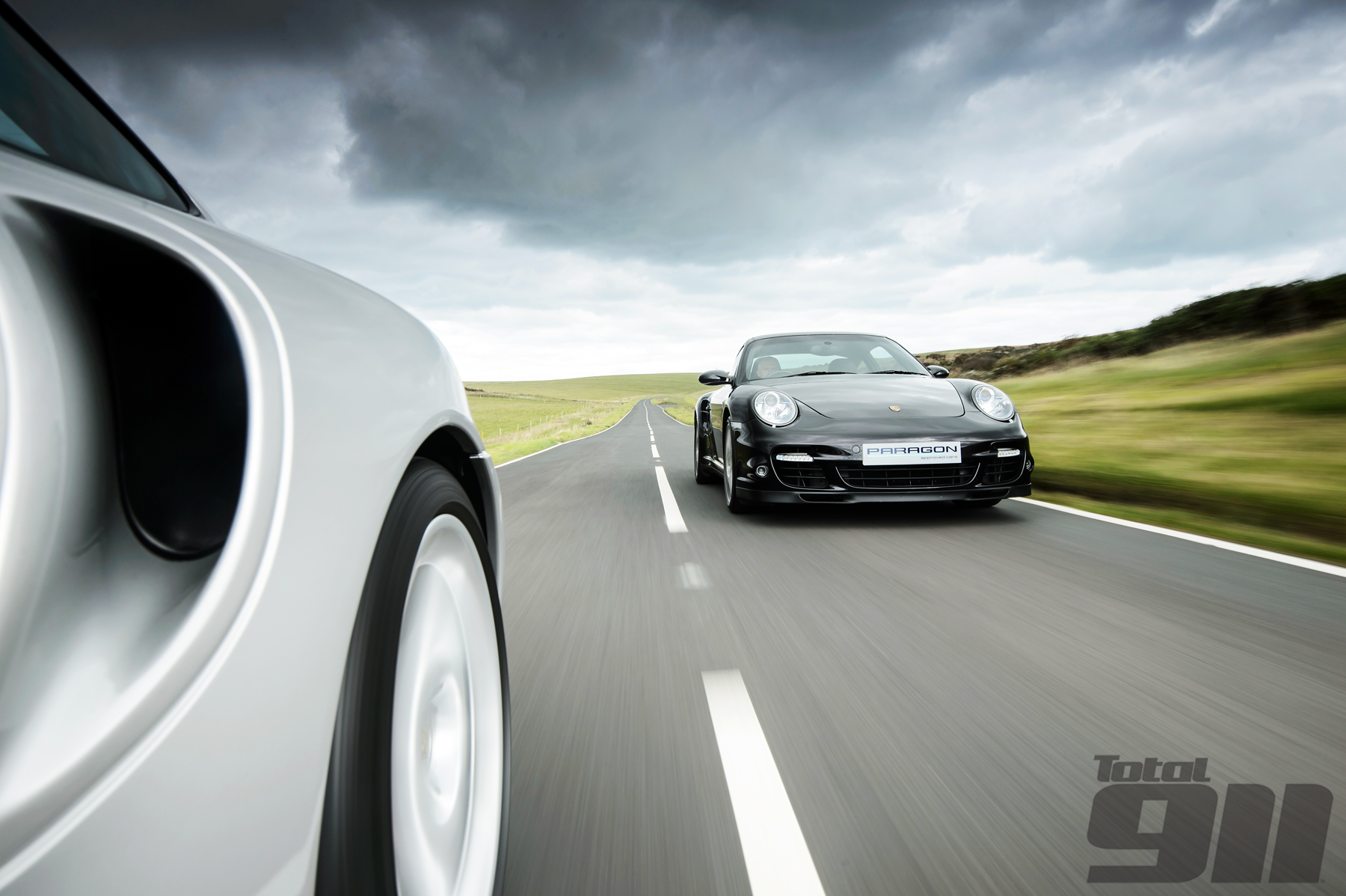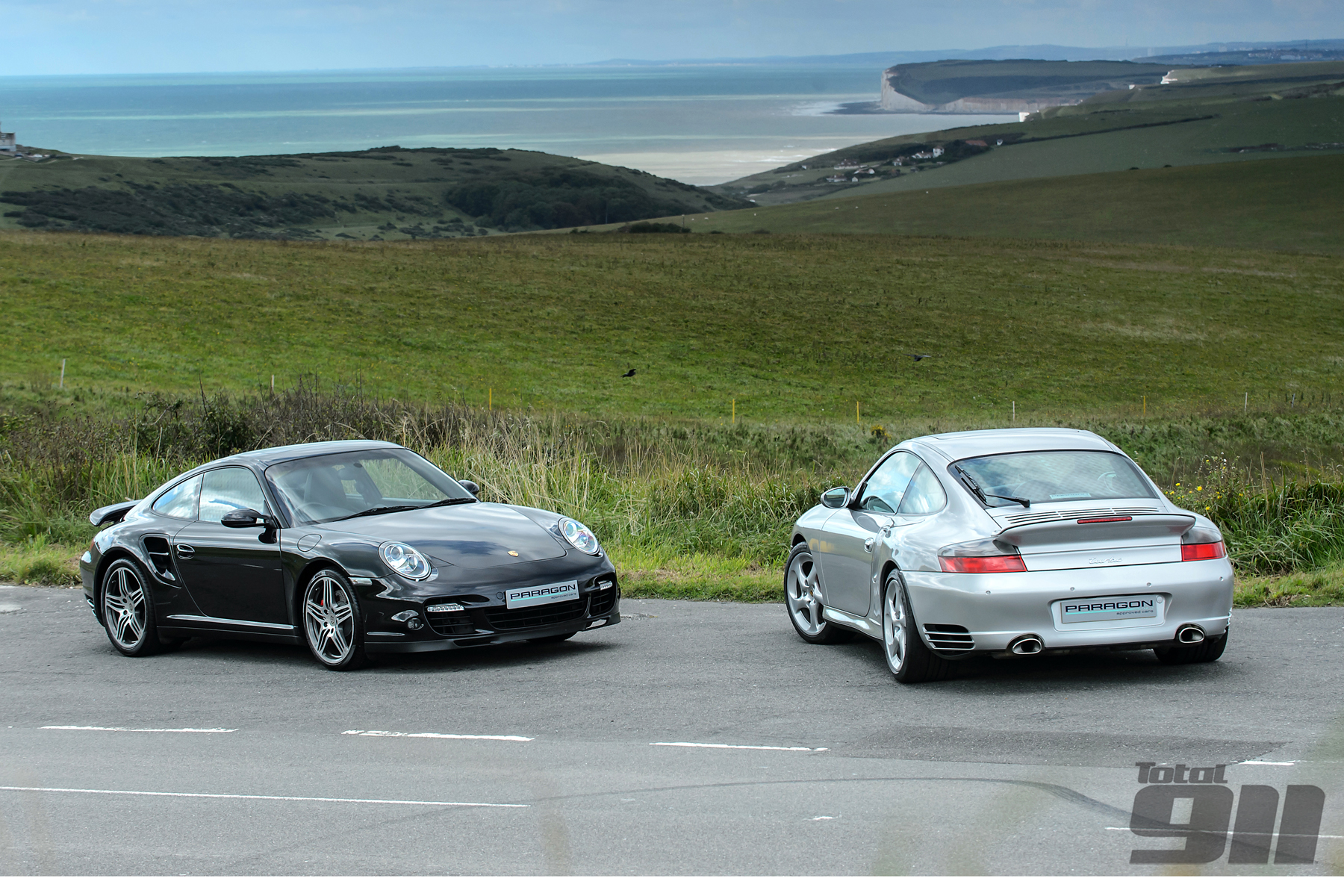996 v 997 Turbo
If you’d been lucky enough to work as a motoring journalist in the 80’s (when budgets were generous, and launches went on for days) you’d have laughed at the proposition that the 911 Turbo would evolve into the definitive secure, all weather supercar within the next decade or so. The original 930 Turbo may have become mildly more approachable with the 1989 advent of the G50 gearbox, it’s 5 ratios making lag slightly less of an issue, but here was a car that always carried a serious sting in its tail.
A reputation cemented by a dastardly combination of short wheelbase, turbo lag, tail heavy weight distribution and strong lift off oversteer characteristics meant only the most skilled could extract the best from it, whilst many less skilled would find themselves in trouble, and a consequently broken car. Of course for some this defines the very appeal of a 930 Turbo, but for many the car proved hugely exciting but occasionally terrifying to drive – particularly if rain had fallen.

1995 marked the beginning of the evolution towards the 911 Turbo as we know it now; the 993 Turbo introducing technology that had first appeared almost a decade earlier in the seminal 959. Twin turbos delivered an even bigger, yet more manageable hit of power. Married to modern chassis technology & four wheel drive, the 911 Turbo was suddenly a car capable of covering ground with immense speed and security. And if the 993 generation Turbo heralded a new direction in the evolution of the 911 Turbo, the 996 cemented what the 911 Turbo would come to stand for: the definitive all weather supercar.
The 996 represented so much for Porsche, bringing with it the biggest revolution in the 911’s development so far. It introduced a new way of building cars (hence the commonality with its Boxster cousin), a water cooled flax six for the first time and truly modern aerodynamics; the platform would form the basis of the 911 for the next 15 years. It also formed the basis of the 911 Turbo that many regard as the optimum balance of speed, usability and purity of driving experience.

Why? It offers perhaps the perfect blend of compact dimensions (it’s little wider than a 718 Boxster), immense performance from the unburstable Mezger flat six, and a chassis which delivers a secure, communicative driving experience with a purity supposedly lost to PASM & computerized chassis control systems of future generations. Or so the accepted wisdom says….
To read the full in-depth feature of our definitive 996 v 997 Turbo test, pick up a copy of Total 911 issue 159 here or download from Newsstand.

Comments (0)